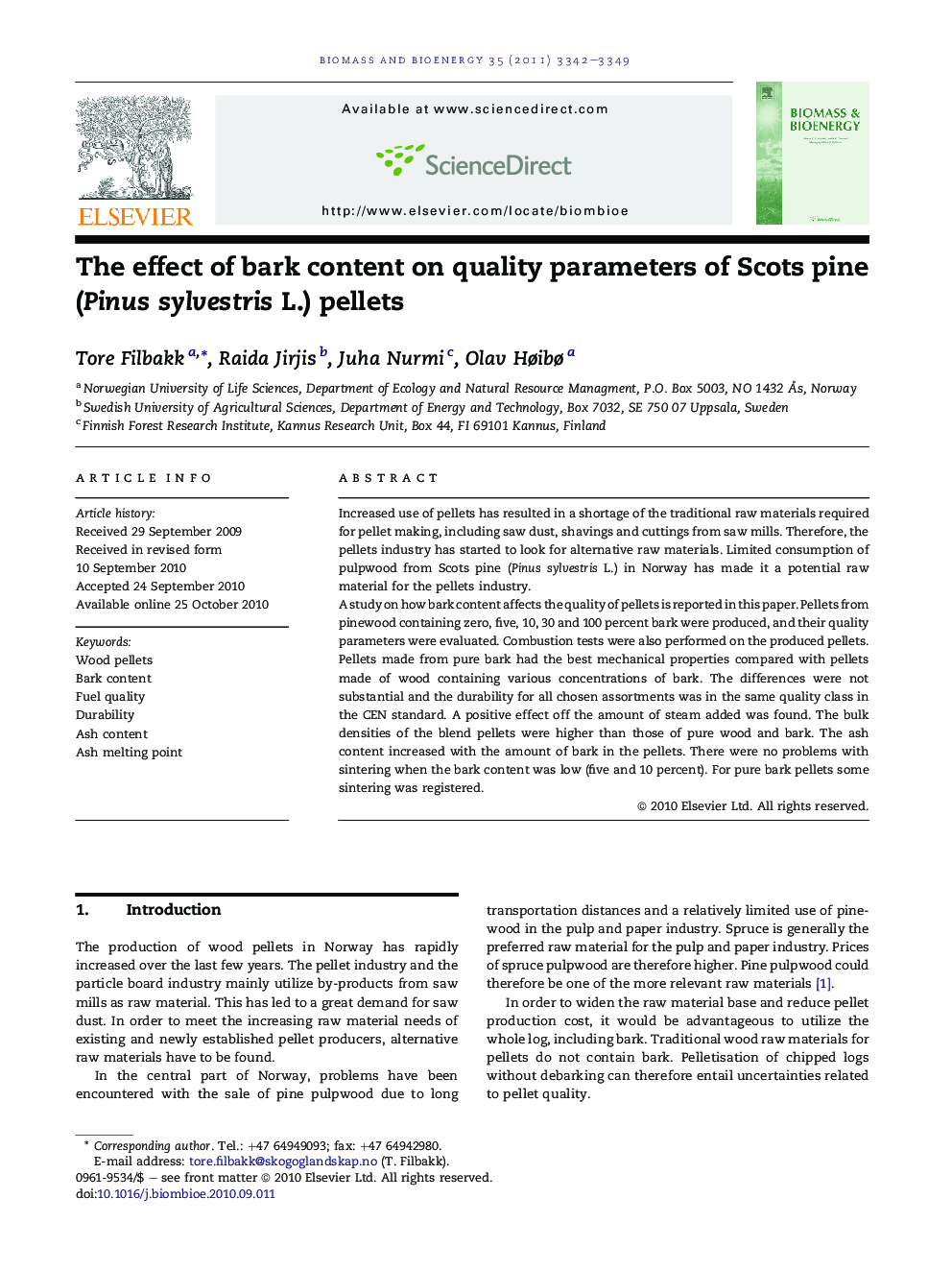| Article ID | Journal | Published Year | Pages | File Type |
|---|---|---|---|---|
| 678008 | Biomass and Bioenergy | 2011 | 8 Pages |
Increased use of pellets has resulted in a shortage of the traditional raw materials required for pellet making, including saw dust, shavings and cuttings from saw mills. Therefore, the pellets industry has started to look for alternative raw materials. Limited consumption of pulpwood from Scots pine (Pinus sylvestris L.) in Norway has made it a potential raw material for the pellets industry.A study on how bark content affects the quality of pellets is reported in this paper. Pellets from pinewood containing zero, five, 10, 30 and 100 percent bark were produced, and their quality parameters were evaluated. Combustion tests were also performed on the produced pellets.Pellets made from pure bark had the best mechanical properties compared with pellets made of wood containing various concentrations of bark. The differences were not substantial and the durability for all chosen assortments was in the same quality class in the CEN standard. A positive effect off the amount of steam added was found. The bulk densities of the blend pellets were higher than those of pure wood and bark. The ash content increased with the amount of bark in the pellets. There were no problems with sintering when the bark content was low (five and 10 percent). For pure bark pellets some sintering was registered.
